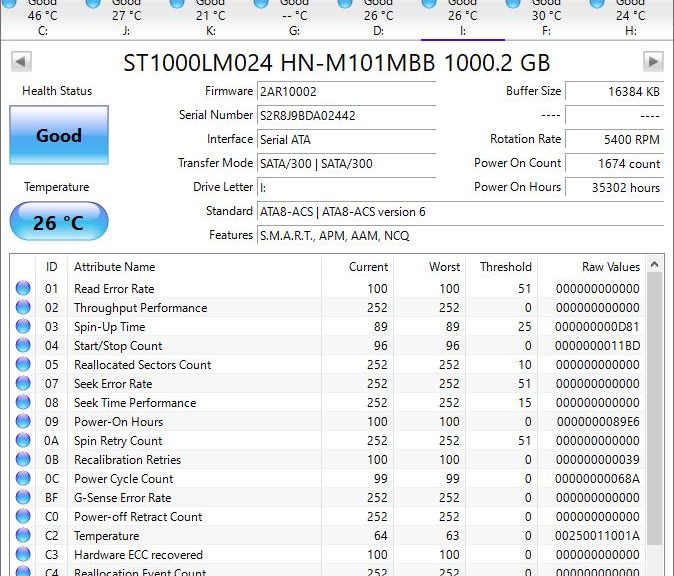I’m a long-time member and supporter at TenForums.com (joined November 14 2014). Just recently I saw a thread where a member reported issues with an apparently failing hard disk drive (HDD). Immediately, he and other responders started chewing on how to diagnose and possibly fix the HDD. “NO!” I remember thinking as I started reading the back-n-forth. “Failing drives need copy first and foremost,” I went on, “so progressive failures won’t cause more data loss.”
Why Do Failing Drives Need Copy First and Foremost?
If an HDD is starting to fail, there’s usually a cascade involved. First, one or two small failures, followed by increasing frequency and severity of failures. After that: complete drive failure. Once you have a clue that a drive is starting to fail — and SMART monitors like HD Sentinel or CrystalDiskInfo will clue you in quickly — the next step in troubleshooting is: Make a snapshot!
When trouble rears its head, the temptation to start diagnosing and attempting fixes can be nearly overwhelming. But in this particular case — a possibly failing HDD — such diagnosis and fix activities can severely exercise the disk. If it is failing, that could either make existing data losses worse, or cause data losses that haven’t yet occurred.
How to Get That Snapshot
I’d try a disk image using something like Macrium Reflect Free. If the disk is seriously corrupted, however, it might not work. In that case, use File Explorer or copy commands at the command line/in PowerShell to copy anything and everything you can see.
On the other hand, if you have a reasonably current backup of the failing drive — and you should — you can copy only items dated since the backup was made. Once you’ve captured what you can, you won’t experience further data loss as you pursue various troubleshooting strategies. Now that you’ve done due diligence for data protection, go for it!
When in Doubt, Replace the Disk
In my experience over 36 years of working with personal computers, I’ve had half-a-dozen hard disks fail on me. (I bought my first PC in 1984: a Macintosh 512K, aka “Fat Mac.”) As disks start to fail, they become increasingly unreliable and problematic. I’ve always replaced them as soon as diagnosis pointed out unquestionable failure signs or symptoms. I learned the hard way to backup, too: I lost the better part of a book manuscript in the late 80s when an external (and expensive!) 300MB SCSI hard disk experienced a head crash. Please: learn from my bad experiences. Don’t wait to have your own. Take my word for it: you won’t like them, not one little bit.

I would also mention that drives that are unbootable can often have the data saved by booting from a Linux Live CD (USB flash drive).
Doing frequent disk images and using tools like Karen’s Replicator, or Windows File History to backup volatile data between images, goes a long way in minimizing data loss and down time when used in combination.
As always, sir, you provide excellent input and advice. Thanks for commenting. =e=